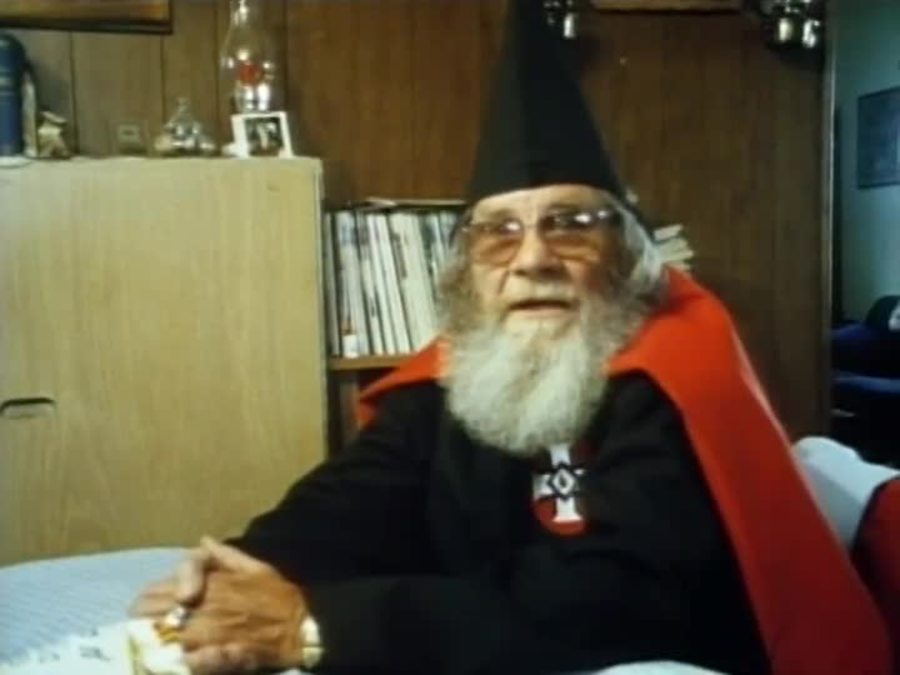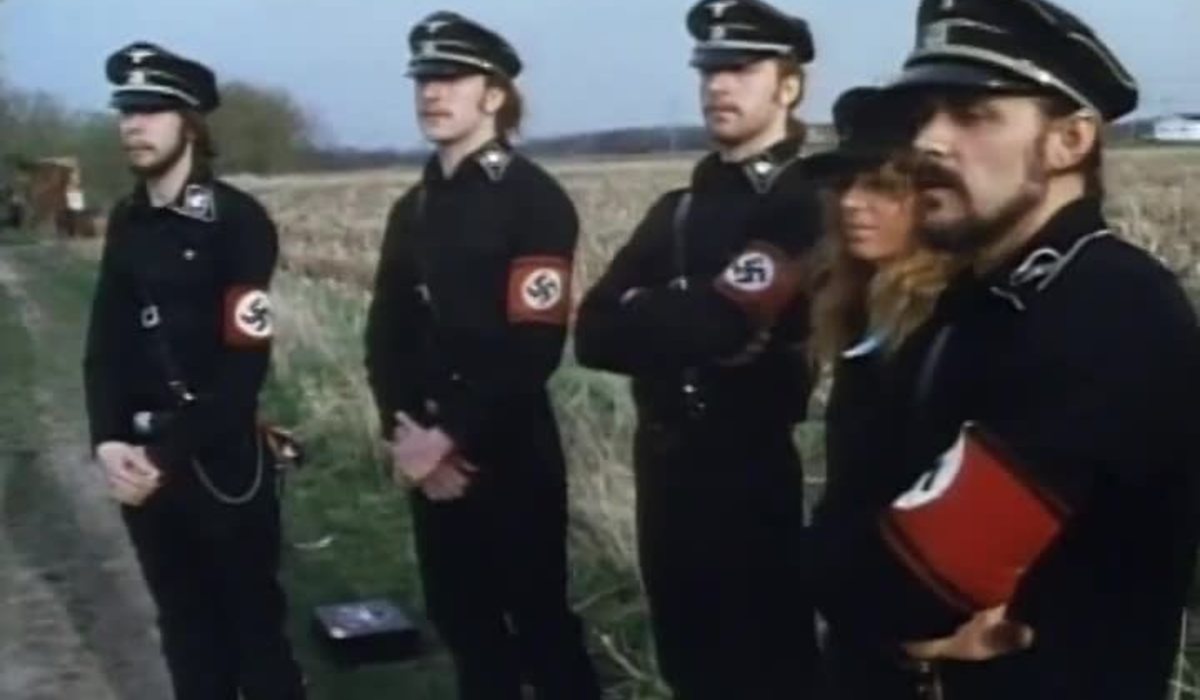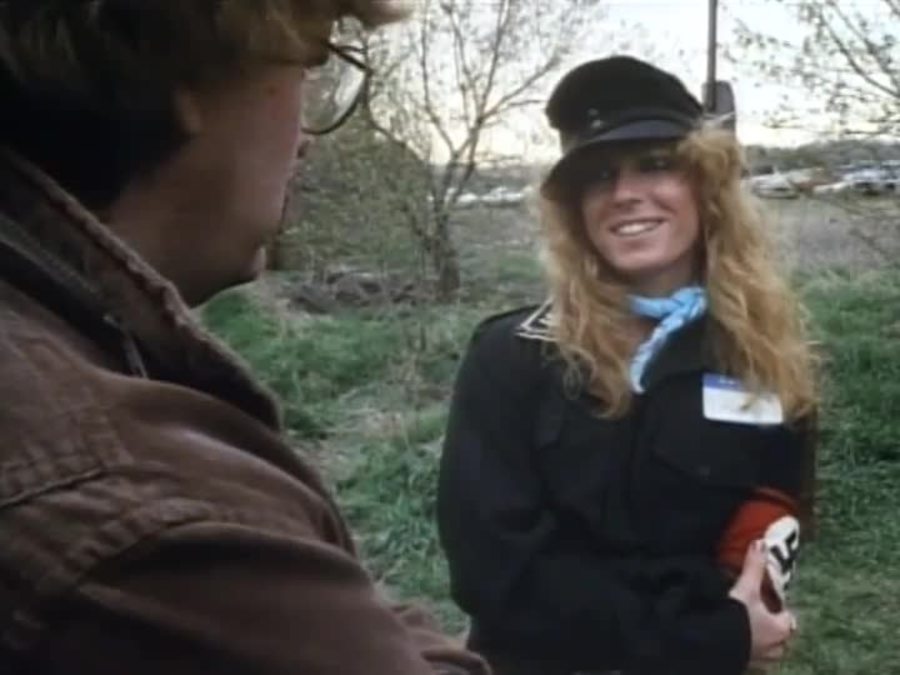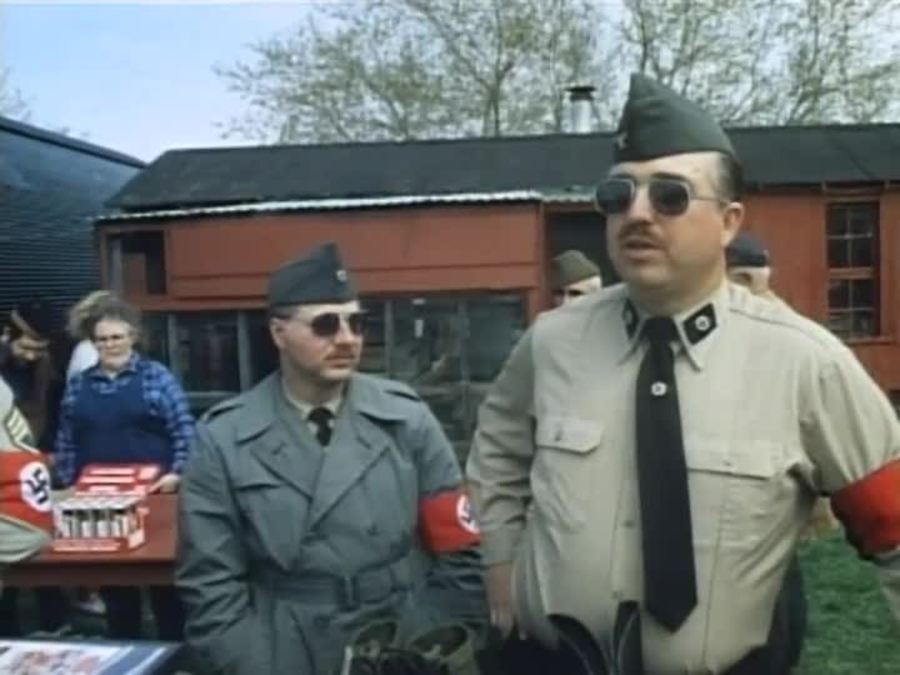Described as a “love mongerer” who is seemingly above hate, George Lincoln Rockwell is credited in the 1991 documentary "Blood in the Face" for fueling the modern American neo-Nazi and white power movements. Through archival footage, we see Rockwell interviewed and giving wannabe pseudo-intellectual speeches on race wars, revolution and how Hitler was the second coming of Christ. Mind you, this all took place in the 1950s and 60s, soon after WWII. While some accost Rockwell for being a monster, one woman claims he has the right to speech and that right mustn’t be impeded. Asked what she thinks of him otherwise, she responds that he has a neat appearance.
This is the disturbing gut punch of truth that "Blood in the Face" provides: that the fringe extremists determined to “take our country back,” people we may even call our neighbors, have found more than receptive ears and minds for their message. Even the filmmakers Anne Bohlen and Kevin Rafferty – who only express their anger and horror at the very end of the film – lead us into a twisted beast of logic when confronting what they feel deep down. The movie cuts to credits before the audience has time to draw a response, indicating the directors' fear that the most hateful people around may not be so alone, and may only grow in numbers.
Currently streaming on Fandor, "Blood in the Face" is immensely grotesque and infinitely disturbing, but also brilliant in exposure and capture, in expression and suggestion. It’s unfortunately all too relevant now, given recent events in Charlottesville and the wave of hate crimes and white supremacist activism spurred by the election of their enabler-in-chief, Donald Trump. The context of this documentary isn’t one of a specific moment, but of future ones. It’s a movie about the snowball effect that hate and misinformation produce from generation to generation, poisoning potentially good people with ugly evil.
For example, we meet a marine who served during WWII, but now sits on camera wearing a hood on his head and spitting epithets out of his mouth. We see another man, a local White Power leader, informing his guests to please move their cars to a better location for fear that if it rains, the cross burning might be moved to that area. He does this in a kindly manner, even laughs a bit about it, before returning to his service.
The casual and leisurely way these interviews are conducted work not only as a way for the filmmakers to gain some level of trust, but to put the audience in step with those who may be easily converted. The amount of effort these white supremacists make to justify their beliefs and actions before the camera is staggering. They level of false factoids and conspiracy theories would make moon landing truthers blush. These are Alex Jones listeners and David Duke voters – and they listen wholeheartedly and vote in full force. Their paranoia and true believer delusions are barely hidden under supposed disenfranchisement, heritage and “economic anxiety,” which comes out through sweat and sincere speeches given with conviction. This is a horror film for our time unlike any other.
In "Blood in the Face," White Power is in fact equated as a civil rights movement, like “save the whales or seals,” a young woman states. She may be a holdout for possible goodness, as she appears genuinely uncomfortable not with being interviewed, but with deciding what answers to provide. She stammers often, looks off camera and even comes close to tears, trying to stay focused on the message of racial purity. I suspect an internal conflict of conscience is happening as she actually considers her thoughts, possibly for the first time.
In another moment, Michael Moore (yes, that one) tells a lady that she doesn’t look like a typical Nazi. “You could be a Coppertone model,” he says. The woman blushes, hesitates, smiles and repeats the message of the movement in a quietly choked up and surprised manner. Caught off guard, she considers where she is at and why she is there. Only a scene before, she is seen walking arm in arm with a rather militant looking man who drags her back to a car. A clear picture of abuse and manipulation comes to mind.
And maybe that could be just it. Maybe some of these people aren’t bad, but only victims. Or maybe that's just what they want us to think. There are many dark sides to humanity. And this film reminds us, those parts aren't going away.
Rating: 5 / 5
Follow the author on twitter @billreviews.
3 WAYS TO SHOW YOUR SUPPORT
- Log in to post comments















